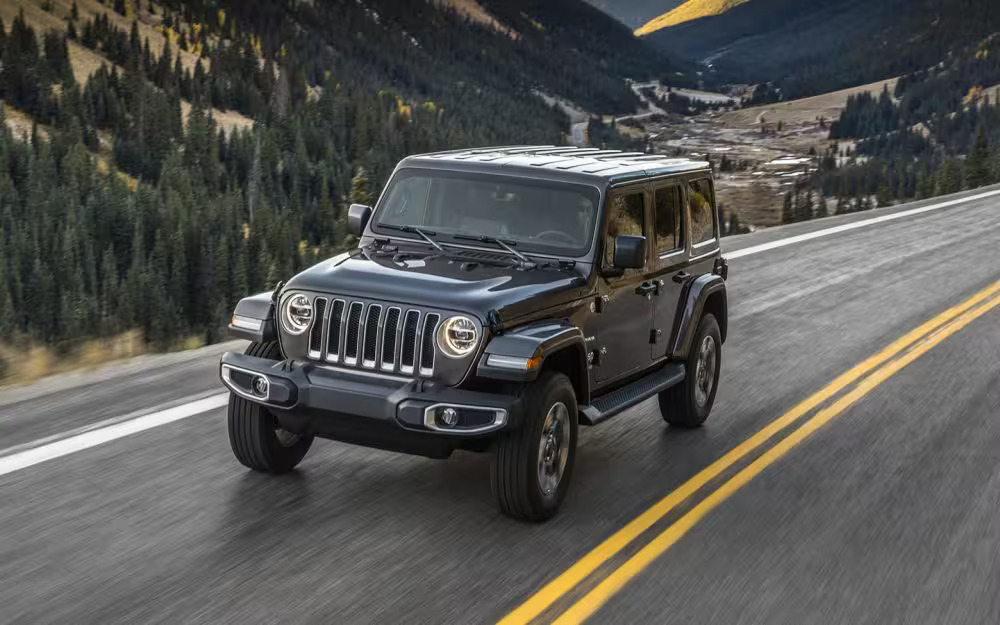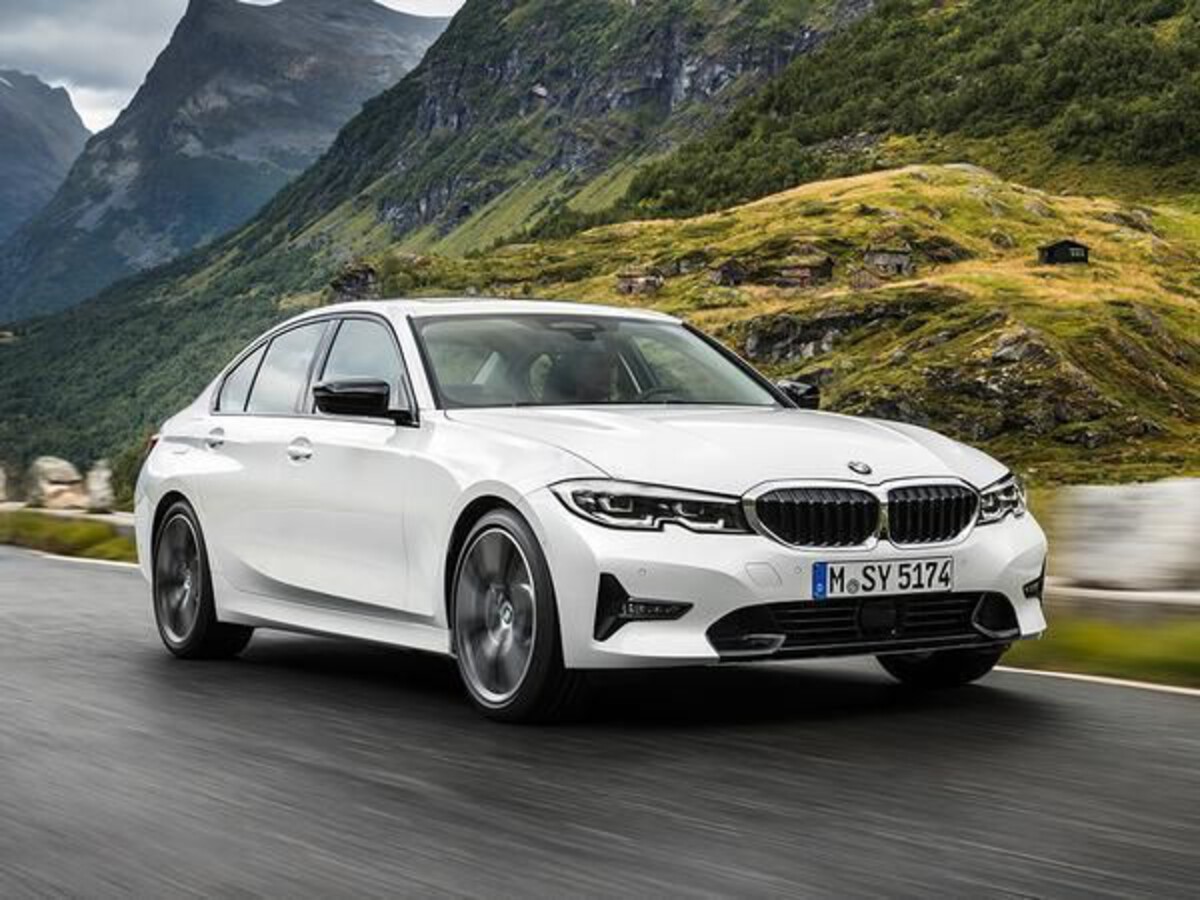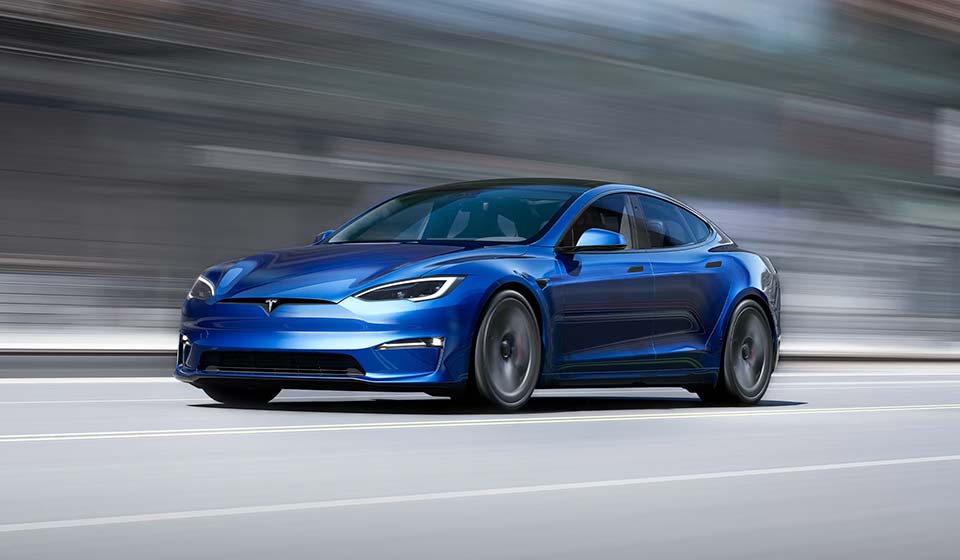The automotive industry has witnessed a seismic shift over the past few decades, driven largely by advances in electronics and software. Modern vehicles are no longer just mechanical machines; they have evolved into sophisticated computer networks on wheels.
At the heart of this transformation lies the Engine Control Unit (ECU), a complex microprocessor-based system responsible for managing everything from fuel injection and ignition timing to emissions control and engine performance optimization.
While the ECU might be invisible to the average driver, its role is pivotal, affecting everything from how smoothly an engine runs to how efficiently it consumes fuel and how cleanly it emits exhaust gases.
As vehicles have become more electronically dependent, the relationship between car manufacturers and their ECU software has also evolved. Unlike the early days of automotive electronics, where software was mostly static once the vehicle left the factory, today’s vehicles often require ongoing ECU updates.
These updates, commonly known as “reflashes,” involve reprogramming or upgrading the ECU’s firmware to fix bugs, improve performance, meet new emissions standards, or even unlock new features.
Some manufacturers roll out these updates regularly — sometimes annually or more frequently — reflecting the increasing complexity and dynamism of modern engine management systems.
This has introduced a new layer of vehicle maintenance, one that requires owners to stay connected with their dealerships or service centers to ensure their cars operate at peak efficiency and comply with regulatory requirements.
However, not all cars follow this model. There exists a class of vehicles known for their electronic simplicity and durability, where the ECU software is robust enough to last the vehicle’s lifetime without requiring reflashes. These cars, often characterized by naturally aspirated engines, straightforward fuel management systems, and limited electronic complexity, exemplify a different engineering philosophy.
Rather than chasing cutting-edge optimization and constant refinement through software, these manufacturers prioritize reliability, mechanical simplicity, and proven technology.
For owners, this means fewer service visits related to software updates, lower maintenance costs, and a vehicle that feels “set and forget.” Such cars appeal to buyers who value consistency and dependability over the latest tech features.
In this article, we will explore both ends of this spectrum. We’ll delve into five cars renowned for their ECU software stability — vehicles that virtually never require ECU reflashes and embody an engineering ethos centered on durability and simplicity.
On the other side, we’ll examine five cars that regularly receive ECU updates, often every year or more, showcasing the cutting edge of automotive technology and the ongoing relationship between software developers and vehicle performance.
These cars highlight the growing importance of software in modern automotive design and the challenges manufacturers face in balancing performance, emissions, and customer satisfaction in a rapidly changing regulatory landscape.
Understanding which vehicles require frequent ECU updates — and why — offers insights not only into automotive technology but also into ownership experiences and maintenance strategies. It reveals how different manufacturers approach the balance between innovation and reliability and how these decisions impact the long-term costs and satisfaction of owning a vehicle.
Whether you are an enthusiast eager to tune your car or a practical buyer seeking low-maintenance reliability, knowing how ECU updates affect your vehicle can shape your purchasing decisions and maintenance habits.
Through this comparative exploration, we’ll illuminate the technological trends shaping the automotive world and provide a clearer picture of what ECU reflashing means in practice. By the end of this article, readers will have a deeper appreciation of the invisible software layer that influences every drive and understand how different design philosophies manifest in the vehicles we choose to trust and enjoy on the road.
ALSO READ: 6 Crossovers Where Rear Cargo Lid Hits Tall Drivers
5 Cars That Never Need ECU Updates

Toyota Corolla
The Toyota Corolla’s legacy as one of the most reliable and best-selling vehicles globally is inseparable from its electronic systems, including the Engine Control Unit. Unlike modern vehicles that boast intricate software-dependent features, the Corolla’s ECUs—especially in models before the mid-2010s—were designed with simplicity, reliability, and robustness in mind.
Toyota’s philosophy here was clear: build an engine management system that was thoroughly tested, uses proven technology, and focuses on fundamental parameters like air-fuel ratio, ignition timing, and basic diagnostics. This design approach limits the need for future updates.
Technically, the Corolla’s ECU firmware is generally static. It relies on deterministic control strategies rather than adaptive learning algorithms that could require periodic recalibration. The fuel injection and ignition maps are conservative, prioritizing engine longevity and smooth drivability over performance tweaks that could necessitate reflashes.
This static software approach means that once the car is released, the software remains valid and effective throughout the vehicle’s life, barring rare recall fixes or emissions compliance updates.
Moreover, the Corolla’s reliance on naturally aspirated engines further simplifies ECU demands. Without turbocharging or complex emissions controls like particulate filters or selective catalytic reduction, the ECU does not need to continuously adapt or evolve.
This minimal electronic complexity translates directly into fewer chances of bugs or faults that might prompt an ECU update. The fact that the Corolla has maintained largely unchanged engine architectures for long stretches also helps maintain software stability.
From an ownership perspective, Corolla drivers appreciate that their vehicles rarely require dealer visits for ECU reflashes. This translates into lower maintenance costs and less downtime. Even when dealerships perform diagnostic checks, the ECU software rarely needs modifications.
This makes the Corolla especially attractive for fleet operators, budget-conscious buyers, and those who prioritize long-term dependability over bleeding-edge technology. Additionally, this stability aids aftermarket tuners and mechanics who find a consistent baseline environment easier to work with.
In essence, the Corolla’s ECU represents an era of automotive electronics focused on reliability and consistency rather than constant refinement, making it one of the most “set-and-forget” ECUs in the automotive world.

Honda Civic
Honda’s Civic, particularly the generations spanning the late 1980s through the early 2000s, embodies a design ethos centered on mechanical excellence combined with a straightforward electronic control system. During these decades, Honda’s engineering teams prioritized a robust, minimalist ECU design that managed engine parameters without relying heavily on adaptive or complex algorithms.
This approach ensured that once the ECU was programmed and calibrated, it remained stable and effective throughout the vehicle’s life.
One key to this stability is Honda’s early development of VTEC (Variable Valve Timing and Lift Electronic Control), which, while mechanically innovative, was electronically simple in concept. The ECU controlled valve timing through direct, pre-mapped parameters rather than relying on adaptive learning or frequent recalibrations.
This reduced the risk of software bugs and the need for frequent reflashing. Furthermore, Honda’s ECUs were well documented, and the company maintained stringent software quality controls that minimized post-release errors.
Unlike some contemporaries, Honda avoided the temptation to integrate overly complicated emissions or fuel economy strategies that could have made the ECU prone to software issues. This meant that the software required fewer updates or patches.
Even as newer Civics introduced more sophisticated engine management and onboard diagnostics, Honda preserved software stability as a priority, avoiding the proliferation of frequent reflashes.
From an enthusiast’s viewpoint, this consistency was a boon. The Civic’s ECU provided a stable foundation for tuning, modification, and repairs without constant worry about software version compatibility or frequent updates erasing custom calibrations. The combination of simple yet effective ECU programming and solid mechanical design has contributed significantly to the Civic’s enduring popularity as a reliable daily driver and tuning platform.

Jeep Wrangler
The Jeep Wrangler, especially older YJ and TJ models, stands as a testament to automotive simplicity and durability. Unlike many modern vehicles that rely heavily on complex electronic controls, these Wranglers utilize ECUs that perform straightforward tasks such as managing ignition timing and fuel delivery. Jeep deliberately limited the ECU’s scope to keep things simple, rugged, and field-serviceable, catering to off-road enthusiasts who often operate in harsh and remote environments.
The ECU in these vehicles typically eschews adaptive learning, extensive emission controls, or integration with advanced driver-assistance systems. Instead, it uses static, time-tested software maps designed to run engines under a broad range of conditions without the need for continuous recalibration. This static nature means owners rarely have to worry about reflashing their ECU to correct drivability issues or update emission software.
From a mechanical standpoint, Jeep prioritized robustness over electronic refinement. Their vehicles are often modified for off-road use, with owners frequently replacing or reprogramming components themselves.
A stable ECU software baseline makes this process less complex. Furthermore, since Jeep Wranglers are not usually equipped with complicated turbocharged engines or emission devices, the risk of ECU-related faults or regulatory-driven updates remains low.
The Wrangler’s reputation for reliability under extreme conditions is partly due to this approach. The lack of frequent ECU reflashes means fewer electronic points of failure, an essential feature for adventurers who need their vehicle to run dependably off the beaten path.
The trade-off is that Wranglers lack some of the refinement and efficiency gains found in more electronically advanced vehicles, but for many owners, this is a worthwhile compromise.

Subaru Outback and Forester
Subaru’s boxer engines, found in models like the Outback and Forester from the early 2000s, are unique in their horizontally opposed layout, which delivers a low center of gravity and balanced handling. Alongside this mechanical innovation, Subaru adopted a relatively simple ECU software design for these engines that contributed to long-term reliability and consistent performance.
These ECUs were programmed to manage naturally aspirated engines with conventional fuel injection and ignition systems. Unlike Subaru’s later turbocharged models, which incorporate more complex boost management and emissions controls, these earlier engines had straightforward control maps with little need for adaptive learning or frequent updates. This simplicity meant fewer bugs, less wear on software integrity, and a lower risk of the ECU requiring reflashing.
Another reason for the ECU’s stability in these vehicles is Subaru’s strategic decision to keep the all-wheel-drive (AWD) system’s control separate from the engine ECU. This isolation reduces the complexity of the ECU’s software, as it does not have to manage multiple interdependent vehicle systems simultaneously.
This architectural choice helps minimize the chances of software errors and reduces the need for updates that affect drivetrain behavior.
Owners of these Subaru models benefit from predictable and stable performance over many years, often with few, if any, ECU-related service interventions. This stability contributes to Subaru’s growing reputation for reliable, capable vehicles that can endure various driving conditions without constant electronic maintenance.

Ford F-150 (Late 1990s to Early 2000s)
The Ford F-150, a best-seller in the United States for decades, achieved much of its reputation for durability through a philosophy of mechanical and electronic simplicity, especially in models from the late 1990s to early 2000s. The ECUs in these trucks performed essential engine management tasks without the complication of advanced emission controls, turbocharging, or hybrid systems that require frequent updates.
During this era, Ford’s ECU software was designed with basic fuel injection and ignition timing maps, and diagnostics focused mainly on component status rather than adaptive tuning. This straightforward design resulted in ECU software that remained valid for the vehicle’s lifetime with minimal need for reflashing. The trucks’ large, naturally aspirated V8 and V6 engines operated under stable and predictable conditions, further reducing the need for software modifications.
For work truck owners, this simplicity translates to fewer maintenance headaches and lower costs. The lack of frequent ECU updates meant that service intervals were primarily mechanical, avoiding costly software reflashes or complicated dealer procedures.
This ease of maintenance, combined with mechanical robustness, made the F-150 an ideal vehicle for fleet operators, contractors, and owners who needed reliability and uptime over electronic sophistication.
Additionally, the large aftermarket and repair community for these F-150 models thrives on the ECU’s simplicity, allowing for straightforward diagnostics, repairs, and custom tuning without concerns about frequent software updates invalidating modifications. This further reinforces the reputation of these trucks as “set it and forget it” vehicles, ideal for owners seeking dependable, no-nonsense performance.
5 Cars That Get Reflashed Every Year

BMW 3 Series and M3
BMW’s 3 Series, especially the high-performance M3 variants, is are engineering marvels that blend luxury, sportiness, and cutting-edge technology. However, this sophistication comes at the cost of frequent ECU reflashes.
BMW’s ECUs control a wide array of complex systems — from turbocharged engines with variable valve timing and direct injection to adaptive transmissions and intricate traction and stability control algorithms. This level of electronic integration requires continual software refinements to maintain optimal performance, safety, and emissions compliance.
BMW’s development process emphasizes pushing mechanical and electronic systems to their limits. The ECUs run aggressive fuel and ignition maps that maximize power and efficiency but operate near the edge of tolerances.
Consequently, small software tweaks, delivered as ECU reflashes, are necessary to fine-tune engine behavior, address unforeseen driveability issues, and update emissions control strategies in response to evolving regulations.
Each reflash can adjust parameters like turbo boost pressure, throttle response, and fuel mixture to improve responsiveness or fuel economy. Beyond engine management, BMW frequently updates transmission control software to refine shift patterns and improve smoothness or sportiness depending on driving mode.
These updates are often released annually or semi-annually as part of routine maintenance or recall campaigns, meaning owners typically interact with ECU updates regularly.
While this continuous software refinement enhances vehicle capabilities, it also introduces a dependency on manufacturer updates. Drivers must ensure their cars receive timely reflashes to avoid performance degradation or emissions failures.
Enthusiasts often welcome these updates, as they can unlock incremental power gains or new features without mechanical modifications. Still, the need for frequent reflashing is a trade-off that highlights the complexity and precision engineering inherent in modern BMWs.

Audi A4 and S4
Audi’s A4 and S4 models integrate complex turbocharged powertrains with advanced Quattro all-wheel-drive systems, requiring equally sophisticated engine management strategies.
Their ECUs perform real-time calculations to balance power delivery, emissions, fuel efficiency, and traction control. However, this complexity means the ECU software often demands frequent updates to refine system coordination, improve drivability, and ensure regulatory compliance.
Turbocharged engines inherently operate under varying boost pressures and temperatures, necessitating constant ECU calibration to optimize performance and protect engine components. Audi routinely issues ECU reflashes that recalibrate boost maps, fuel injection timing, and ignition curves to reduce turbo lag, enhance throttle response, and maintain emissions compliance. These reflashes often arrive annually or even more frequently, especially in markets with stringent emissions laws.
The integration of the Quattro all-wheel-drive system adds another layer of software complexity. The ECU must coordinate power distribution between front and rear axles dynamically, requiring continuous software refinements to improve stability and handling under diverse driving conditions. Transmission software updates also play a crucial role, adjusting gearshift logic for smoother or sportier responses depending on model and driver preference.
Owners frequently encounter these ECU reflashes during routine maintenance visits, as dealerships proactively update software to maintain vehicle performance and legal compliance. While these updates often improve the driving experience, they also mean that Audi owners must stay vigilant about software versions and schedule dealer visits accordingly.
For many, the benefits of a finely tuned and compliant vehicle outweigh the inconvenience, but the need for frequent ECU reflashes illustrates the trade-offs of balancing performance, efficiency, and regulatory demands.

Tesla Model S and Model 3
Tesla has redefined the concept of ECU reflashing by pioneering over-the-air (OTA) software updates that continuously improve vehicle performance, safety, and features without requiring physical dealership visits. For Tesla, the ECU encompasses a broad spectrum of vehicle control systems, including electric motor management, battery thermal systems, regenerative braking, autonomous driving software, and infotainment.
Tesla delivers ECU software updates every few months, often adding new features such as enhanced autopilot capabilities, improved battery range, and optimized power delivery.
These OTA updates allow Tesla owners to experience a car that evolves post-purchase, a stark contrast to traditional vehicles, where ECU reflashes are infrequent and mostly reactive. This constant evolution blurs the lines between software and hardware upgrades, making the Tesla ownership experience unique.
While the convenience and continual improvement Tesla offers are revolutionary, the reliance on frequent software reflashes also introduces potential risks. Each update must be rigorously tested to prevent introducing bugs or unintended side effects that could impact vehicle safety or reliability.
Tesla mitigates this with staged rollouts and user feedback mechanisms, but owners must remain connected to the internet to benefit fully from these improvements.
The Tesla model has sparked a shift in the automotive industry toward software-centric vehicle design, where ECU reflashes and software management become ongoing aspects of ownership.
This raises new challenges in cybersecurity, data privacy, and regulatory oversight, but it also opens the door to unprecedented innovation and flexibility in how vehicles operate and improve over time.

Ford Mustang EcoBoost
The Ford Mustang EcoBoost represents a new era of performance where turbocharged four-cylinder engines deliver impressive power and efficiency. However, the complexity of managing turbo boost, fuel injection, and emissions requires the ECU to be updated frequently.
Ford routinely issues ECU reflashes to enhance throttle response, reduce turbo lag, and address drivability issues that arise from the intricate balance of performance and emissions compliance.
Turbocharged engines are sensitive to software calibration. Small adjustments in boost control, fuel timing, or ignition timing can significantly impact engine performance and reliability.
Ford’s approach involves periodic software updates that optimize these parameters, often in response to customer feedback, warranty data, or changes in emissions regulations. These updates can also improve fuel economy or reduce engine knock, contributing to engine longevity.
The Mustang EcoBoost’s electronic throttle control and drive-by-wire systems add additional layers requiring software refinement. Reflashes often tweak pedal sensitivity and transmission shift points to tailor the driving experience and maximize efficiency. Ford dealers typically perform these updates during regular maintenance intervals, meaning owners routinely engage with ECU reflashes throughout ownership.
While the need for frequent ECU updates might inconvenience some owners, it also reflects Ford’s commitment to maintaining the Mustang’s performance and reliability amidst stringent emissions standards and competitive performance benchmarks.
For enthusiasts, these reflashes can sometimes translate into small performance gains without mechanical work, but they also require staying up-to-date with manufacturer recommendations.

Volkswagen Golf GTI and Golf R
The Volkswagen Golf GTI and Golf R models are performance compacts that blend sporty driving dynamics with strict emissions compliance. Their turbocharged engines and advanced all-wheel-drive systems demand sophisticated ECU management that necessitates frequent software updates.
Volkswagen often releases ECU reflashes to balance emissions, drivability, and power delivery, especially as regulations tighten worldwide.
The turbocharged EA888 engine series found in these models requires regular calibration adjustments to maintain peak performance without sacrificing emissions standards.
Volkswagen’s ECU reflashes typically address issues such as turbo boost control, fuel mapping, and ignition timing. These updates aim to reduce turbo lag, improve throttle response, and ensure compliance with evolving emissions testing protocols.
In some markets, emissions-related ECU updates have been more frequent in recent years due to increased regulatory scrutiny, especially following the Dieselgate scandal that heightened awareness of automotive software manipulation.
Volkswagen has been proactive in issuing ECU reflashes to rectify emission control strategies and ensure transparency with customers and regulators.
The Golf GTI and Golf R’s drivetrain complexity, particularly the all-wheel-drive Haldex system, also demands ongoing software refinements to optimize torque distribution and traction. Transmission control units receive frequent updates to smooth shifting and improve responsiveness. These ECU reflashes are typically performed during dealer service visits and have become an expected part of ownership.
Owners may notice slight changes in performance or fuel economy following ECU updates, which reflect the continuous balancing act between regulatory demands and driving enjoyment. While frequent reflashing adds complexity and requires proactive maintenance, it also ensures that Volkswagen’s sporty compacts remain competitive, compliant, and fun to drive.
ALSO READ: 5 Cars with Bulletproof Electronic Systems and 5 That Short Out Easily
As we reach the end of this exploration into the world of ECU updates, the contrasting philosophies behind automotive software management become unmistakably clear. On one hand, there are vehicles designed with simplicity and durability at their core, whose ECU software remains stable and largely unchanged throughout the life of the car.
On the other hand, there are high-tech, performance-oriented machines that demand constant attention through frequent ECU reflashes, reflecting their intricate engineering and ever-evolving performance envelopes. This dichotomy between stability and adaptability in ECU management reveals much about the broader challenges and trends shaping the automotive industry today.
The cars that rarely require ECU reflashes often embody a design philosophy that prioritizes proven mechanical systems and straightforward electronic controls. Their ECUs, while critical, handle well-defined, deterministic tasks such as fuel injection timing and ignition control without relying on complex adaptive algorithms or integration with extensive driver assistance systems.
This approach limits the scope for software bugs or performance degradations that would necessitate updates, resulting in a vehicle that owners can depend on with minimal electronic intervention.
The appeal here is clear: fewer visits to the dealership, lower service costs, and a sense of reliability and predictability in everyday driving. These vehicles often attract buyers who value longevity, ease of ownership, and minimal technological complications, as well as enthusiasts who appreciate a stable baseline for mechanical tuning.
Conversely, cars that get reflashed every year or even more frequently reflect the modern reality of automotive engineering, where software is not a static control system but a dynamic platform continuously refined to meet shifting regulatory requirements, optimize performance, and enhance the driving experience.
For brands like BMW, Audi, Tesla, Ford, and Volkswagen, the ECU represents a central node in a complex network of sensors, actuators, and subsystems that must operate in perfect harmony.
These vehicles’ performance and efficiency often hinge on delicate balances that can be fine-tuned via software updates, whether to unlock additional horsepower, improve emissions compliance, or add new safety features.
The consequence for owners is a maintenance relationship that extends beyond the mechanical into the digital realm, necessitating regular ECU reflashes that can sometimes feel intrusive but ultimately aim to preserve or enhance vehicle value.
Tesla’s approach, in particular, signals a paradigm shift by making ECU updates an ongoing, wireless process that transforms how owners experience vehicle maintenance. Over-the-air updates blur the line between hardware and software improvements, allowing cars to improve incrementally long after purchase.
This model promises exciting potential for continuous innovation but also introduces new challenges in terms of cybersecurity, software reliability, and consumer expectations.
For owners and enthusiasts alike, understanding these ECU update philosophies has practical implications. Those seeking simplicity, lower maintenance costs, and a vehicle that “just works” might gravitate toward models with stable ECU software.
Meanwhile, those drawn to cutting-edge technology, peak performance, or emerging features may accept the trade-off of frequent reflashes as part of a broader value proposition. Regardless, the importance of ECU software in the modern vehicle is undeniable — it shapes everything from emissions to power delivery to user experience.
Looking ahead, automotive software management will only grow more complex as electrification, autonomy, and connectivity further embed vehicles in digital ecosystems. Manufacturers will face ongoing challenges to balance software innovation with reliability and user convenience.
For consumers, staying informed about the nature and frequency of ECU updates will be an increasingly important aspect of vehicle ownership.
Ultimately, this interplay between stability and evolution in ECU programming reflects the broader narrative of the automotive industry: a continual tension between tried-and-true mechanical reliability and the relentless push toward technological advancement.
Both approaches serve vital roles in meeting the diverse needs of drivers worldwide, and both will continue to coexist as the automotive landscape evolves. Understanding these differences empowers consumers to make better choices, appreciate the invisible complexity behind every drive, and navigate the changing road ahead with greater confidence.

